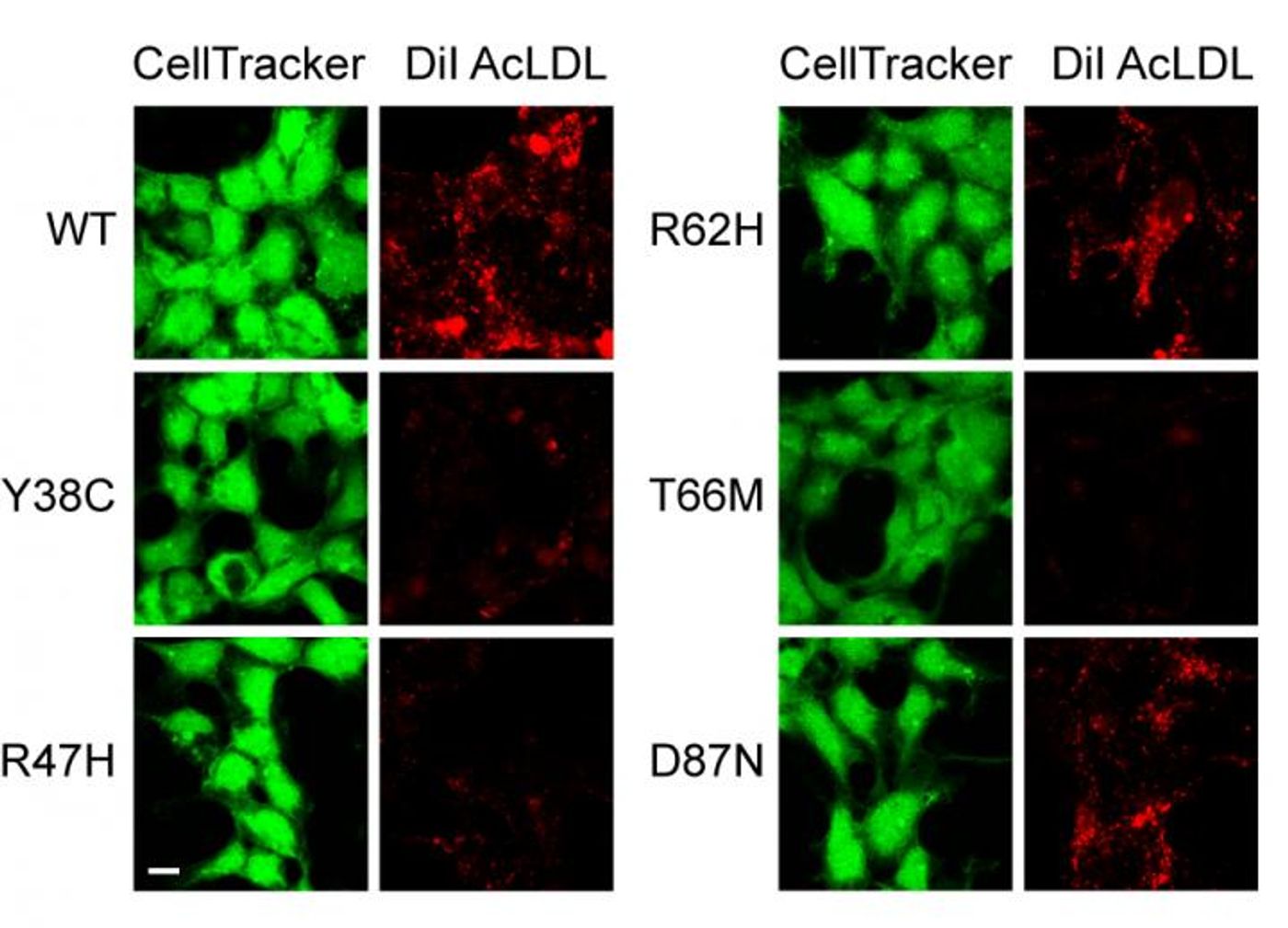The immune cells of the brain are to thank for clearing Alzheimer’s disease-related plaques. Mutations in a certain gene have been found to interfere with this process, though, and researchers from Genentech have been looking for ways to intervene.
Just like macrophages in the blood, microglia in the brain are the resident lymphocyte in the brain, responsible for responding to pathogens, injury, and the presence of amyloid-beta plaques, which aggregate in the brain and lead to the development of Alzheimer’s disease. Mutations in the TREM2 gene, which stands for “triggering receptor expressed on myeloid cells 2,” increase the risk of developing Alzheimer’s disease. This is due to the inhibitory effect some TREM2 variants have on microglia’s ability to clear amyloid-beta plaques.
The Genentech researchers set out to understand the relationship between microglia inhibition and TREM2 mutations, beginning with an “unbiased protein microarray screen” of over 1,500 extracellular proteins. They were looking for proteins that bind and interact with TREM2, and they found some. Several lipoproteins were identified to be involved including low-density lipoprotein (LDL), apolipoprotein E (APOE), and plasma clusterin (APOJ).
Next, with cells obtained from mice and purified, the researchers observed how microglia cells acted under different conditions, such as in the presence of each of these lipoproteins. They found that microglia efficiently clear amyloid-beta plaques in the presence of LDL and APOJ, apparently because these lipoproteins form complexes with the amyloid-beta plaques, making them bigger and easier to target and break down.
Using blood samples of human volunteers, the researchers then started to look for the precise action of the TREM2 mutation that prevented effective clearance of lipoprotein-amyloid beta complexes by microglia. While observing different variants of the TREM2 gene in blood cells, the researchers used macrophages as a stand-in immune cell for microglia. The two lymphocytes are very similar, and macrophages can easily be extracted from the blood to avoid the complications from obtaining microglia from brain samples.
They saw that macrophages in the blood samples from people carrying a specific TREM2 variant known to be associated with Alzheimer’s disease were not as efficient at engulfing and clearing lipoprotein-amyloid beta complexes. The TREM2 gene codes for a receptor protein on the surface of microglia, and the TREM2 gene variant that leads to Alzheimer’s disease is thought to disrupt microglia activity by not binding certain necessary molecules in the brain.
The researchers saw from their studies of several blood samples that it only takes one Alzheimer’s-associated TREM2 gene variant to have the effect on microglia and their inability to clear the necessary complexes. Whether it’s boosting the strength and activity of microglia or targeting the TREM2 gene variants that cause the dysfunction, scientists are just beginning to uncover the crucial relationship between these mutations and immune cells.
This study was recently published in the journal
Neuron.
Sources:
Cell Press,
PLOS One,
NIH Genetics Home Reference,
National Center for Biotechnology Information,
The Green Lab at the University of California, Irvine










